Chromic triboluminescence of self-assembled platinum(II) complexes
https://doi.org/10.1039/D3CC01525D
10 May 2023
A series of Pt(II) complexes bearing N-heterocyclic carbenes, [Pt(CN)2(Rim-Mepy)] (Rim-MepyH+ = 3-alkyl-1-(4-methyl-(2-pyridinyl))-1H-imidazolium, R = Me, Et, iPr, or tBu), exhibits triboluminescence in the visible range from blue to red, as well as the corresponding intense photoluminescence. Remarkably, among the complexes, the iPr-substituted one exhibits chromic triboluminescence behaviour during the process of rubbing and also vapour exposure.
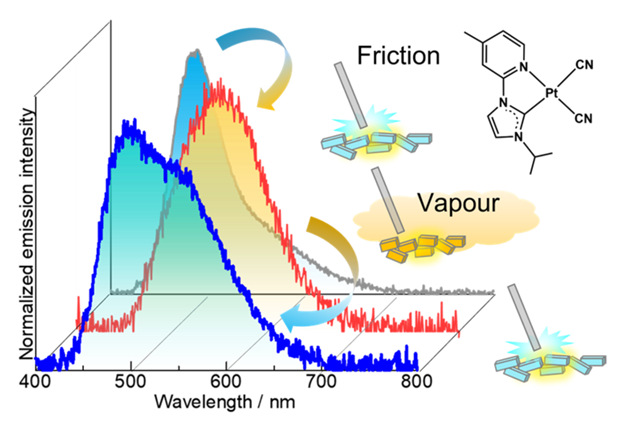
Reversible and Stepwise Single-Crystal-to-Single-Crystal Transformation of a Platinum(II) Complex with Vapochromic Luminescence
https://doi.org/10.1002/chem.202201461
21 May 2022
Out of the blue: The blue color of the luminescence of a PtII complex bearing an N-heterocyclic carbene changes in response to the vapor atmosphere, although the single crystallinity and luminescence intensity are maintained. The vapor-induced reversible and stepwise single-crystal-to-single-crystal (SCSC) transformations were elucidated by variable-temperature and continuous in-situ tracking of single-crystal X-ray diffraction measurements.
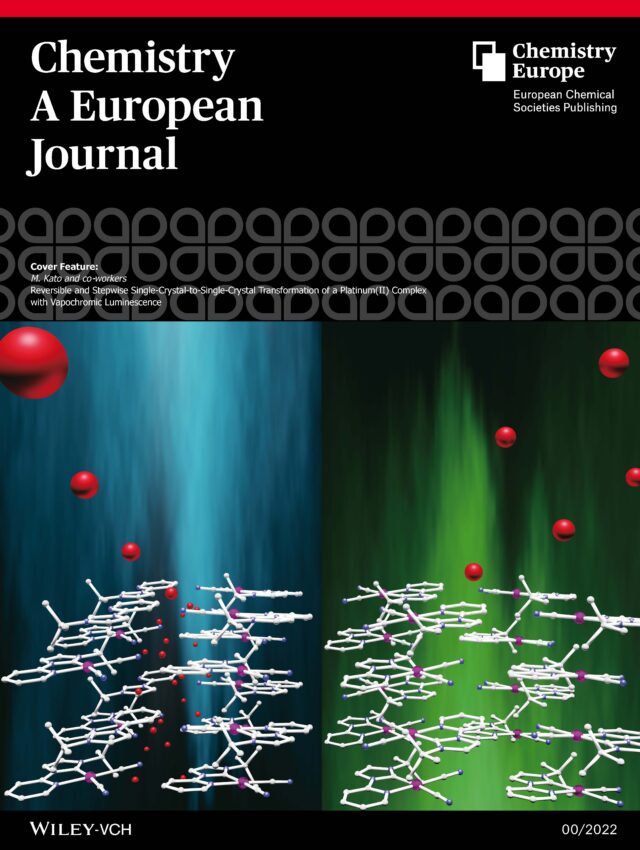
Thermo- and Mechano-Triggered Luminescence ON/OFF Switching by Supercooled Liquid/Crystal Transition of Platinum(II) Complex Thin Films (Advanced Optical Materials 7/2022)
https://doi.org/10.1002/adom.202270028
04 April 2022
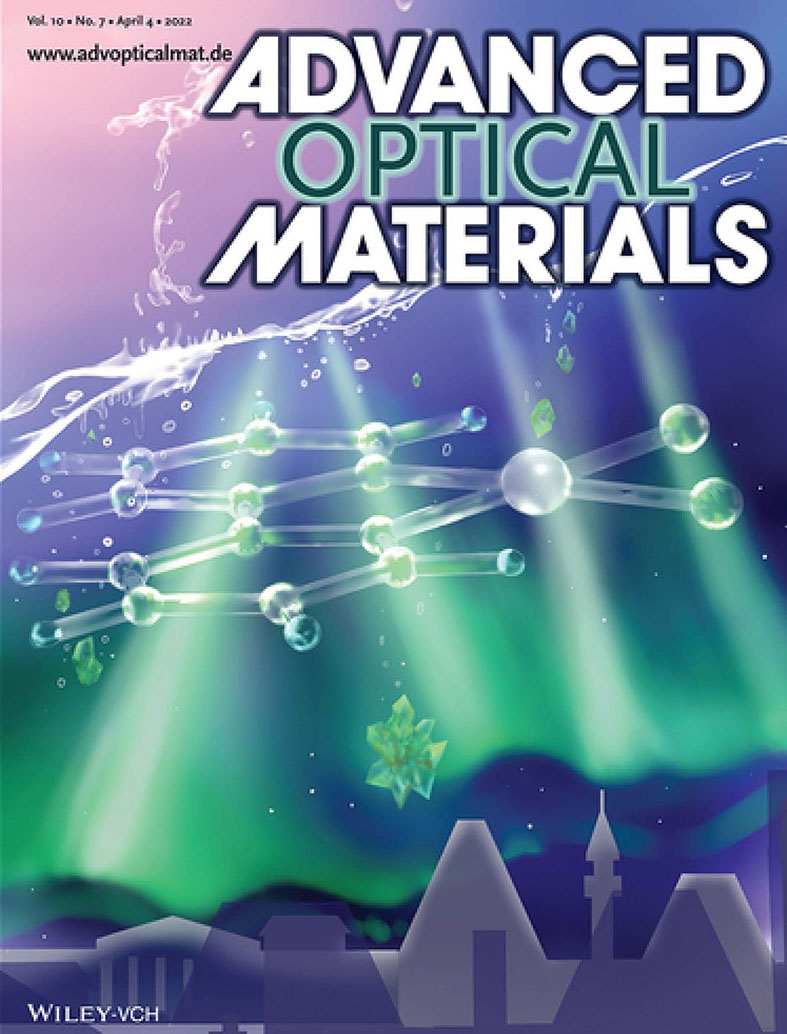 In article number 2102614, Masaki Yoshida, Masako Kato, and co-workers report the mechanically and thermally switchable luminescence of liquescent platinum(II) complexes. This luminescence switching is attributed to the bistability between the supercooled liquid phase and the bright luminescent crystal phase at ambient temperature. Based on this feature, a translucent thin film with mechanostress-induced ON/OFF of luminescence can be fabricated.
In article number 2102614, Masaki Yoshida, Masako Kato, and co-workers report the mechanically and thermally switchable luminescence of liquescent platinum(II) complexes. This luminescence switching is attributed to the bistability between the supercooled liquid phase and the bright luminescent crystal phase at ambient temperature. Based on this feature, a translucent thin film with mechanostress-induced ON/OFF of luminescence can be fabricated.
New aspects of vapochromic metal complexes: Cooperative phenomena in functions and structures
J. Photochem. Photobiol. C 2022, 51, 100477.
06 January 2022
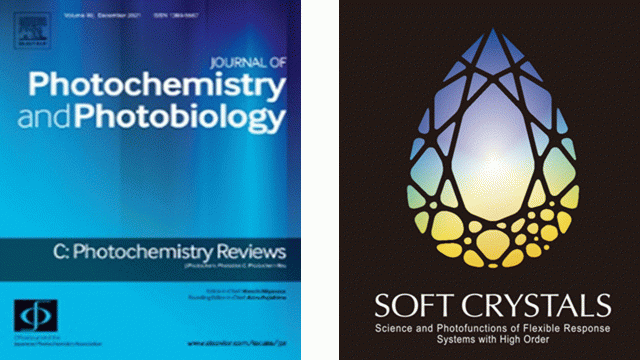
The latest trends in vapochromic materials that exhibit reversible color changes in response to gas or vapor are reviewed. Since the end of the 20th century, studies on vapochromic materials have significantly increased for environmental sensing, particularly those accompanied by the luminescence. In addition to the diversity of materials, vapochromic multifunctional systems that exhibit additional functions, such as conductivity and magnetic properties along with color and/or luminescence change by vapor, would be more attractive. In this context, recent developments in multifunctional vapochromic systems are discussed. Systems exhibiting single-crystal to single-crystal transformations are reviewed because these provide useful information on the structural dynamics, which is essential for understanding vapochromic phenomena. A series of review papers, including this one, have been published in the Journal of Photochemistry & Photobiology C: Photochemistry Reviews as a “Soft Crystal Special Issue”.
Observations of vapor-induced crystallization for an a luminescent Pt(II) complex on a super-resolution microscope
J. Phys. Chem. C 2021, 125, 21055−21061
17 September 2021
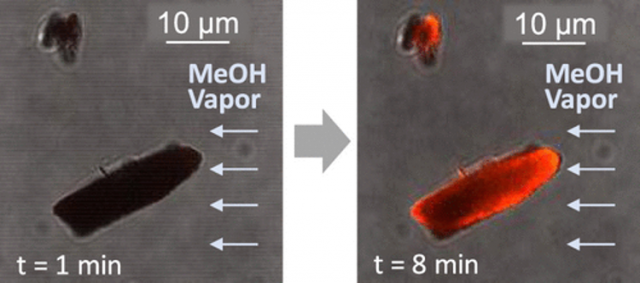 Vapochromic behavior of a platinum complex, [Pt(CN)2(H2dcbpy)] (H2dcbpy = 4,4’-dicarboxy-2,2’-bipyridine) was investigated using super-resolution microscopy techniques. By the observation of phosphorescence, the meso-/microscopic solid-state crystallization processes of amorphous single particles was directly traced under methanol-vapor atmosphere. The findings provide new insights into the mechanisms underlying solid-state crystallization processes, and a novel strategy to sense organic vapor molecules is proposed.
Vapochromic behavior of a platinum complex, [Pt(CN)2(H2dcbpy)] (H2dcbpy = 4,4’-dicarboxy-2,2’-bipyridine) was investigated using super-resolution microscopy techniques. By the observation of phosphorescence, the meso-/microscopic solid-state crystallization processes of amorphous single particles was directly traced under methanol-vapor atmosphere. The findings provide new insights into the mechanisms underlying solid-state crystallization processes, and a novel strategy to sense organic vapor molecules is proposed.
Wide-range color control of the 3MMLCT emission by the fine tuning of the Pt···Pt distance
Angew. Chem. Int. Ed. 2020, 59, 18723–18730.
14 July 2020
Intense blue emission originating from the triplet metal–metal-to-ligand charge transfer (3MMLCT) state has been achieved by the fine control of the stacking structure of Pt(II) complexes bearing an N-heterocyclic carbene (NHC). By the slight change of the stacking structures based on the steric effect of a substituent on the NHC ligand, the luminescence color is freely tuned from red to blue without changing the emission origin (i.e., 3MMLCT).

